Trained as an art historian, Wall now considers himself an artist of modern life. His views of dull industrial Vancouver, British Columbia, the landscape and its people, are too self-consciously artless. The meticulously and ridiculously posed trailer trash in "Shadows and Tattoos" provides a contemporary riff on Manet and Seurat. Photographs of common people doing laundry or crossing an overpass suggest Soviet Social Realism at its most banal. Wall explores surrealism, too, in the incongruously abundant sea life living in "The Flooded Grave." Perhaps the outstanding work in the show is "A Sudden Gust of Wind (after Hokusai)" with its witty homage to the famous Japanese color woodcut. How did Wall get the hat to soar like that or those papers to scatter to the wind at just the right second? Apparently, he owes much to the magic of digital manipulation.
Every one of Wall's compositions is as studied as a fashion shoot. Wall had to wait for the precise moment for that spray of milk to fly in "Milk." He never wastes a shot. Unfortunately, his craft often appears less impressive than all the labor that goes into it. Wall is a master of artistic disorder and artful annihilation. Every small detail is so carefully placed in the seemingly hurricane-dismantled interior of "The Destroyed Room." There is no spontaneity, no emotion, no room for mistakes. These works are all about the photographer’s control. They are so cool that they feign indifference on the artist’s part despite all the effort they require. Even the deceptively ordinary "A View from a Night Club" looks like a spread from
Vogue or
Vanity Fair. It took Wall days to stage its "cast." He leaves nothing to chance.
Wall once dreamed of becoming a filmmaker, so it is not surprising that he often draws on film stills and industrial photography of the 1940s and 1950s for ideas. He distinguishes between his staged "cinematographic" pictures and more immediate "documentary" work. Many of Wall’s photographs are pure narrative and the viewer is expected to fill in the blanks, as in "Fieldwork" and "The Storyteller." Particularly disturbing is the cold, calculated composition of a well-groomed woman performing before some stiff, uncomfortably clothed and thoroughly bored children in "A Ventriloquist at a birthday party in Oct, 1947." Another picture of sluggish suburbia seems nothing out of the ordinary until one spots a couple battling the cops in "The Eviction." This image is as chilly and stagy and, yes, corny as a B movie still. The photographer has dabbled in social satire, as in "Mimic", by having a white man make an obscene racist gesture with his eye as an Asian walks by. Wall’s take on the gruesome aftermath of an Afghan massacre of a Red Army patrol in "Dead Troops Talk" should have been devastating, but despite all the stage blood and guts thrown about, his models’ shameless mugging takes all the bite of the satire and reduces it to cynical camp. Sometimes, Wall actually refers to specific literary sources, as in his pretty study of an elegantly dressed lady from Yukio Mishima’s "After Spring Snow" and the elaborately constructed interior of hundreds of light bulbs dangling from the ceiling inspired by Ralph Ellison’s
The Invisible Man.
Occasionally, Wall reaches for the sublime when he dares to throw subject matter aside to study merely texture and color in diagonal compositions of a kitchen sink or a staining bench. The austere "Poppies in a Garden" and "Sunken Area" are so refreshingly free of the visual tricks of his other work that they seem to have been created by another artist. And yet, as with most of Wall’s more staged compositions in this retrospective, there is much less here than meets the eye.
Michael Patrick Hearn
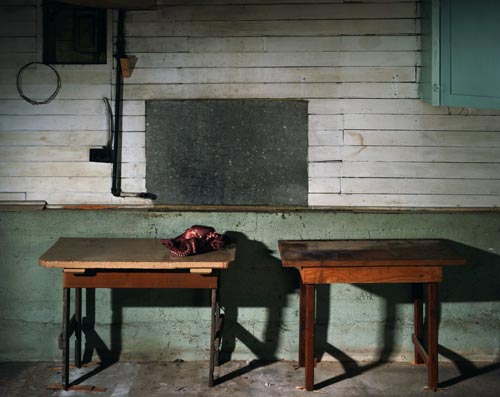
Jeff Wall,
An Octopus, 1990. Silver dye bleach transparency in light box 71 5/8 x 90 3/16 in. (182 x 229 cm). Private collection, Courtesy Hauser & Wirth Zurich © Jeff Wall
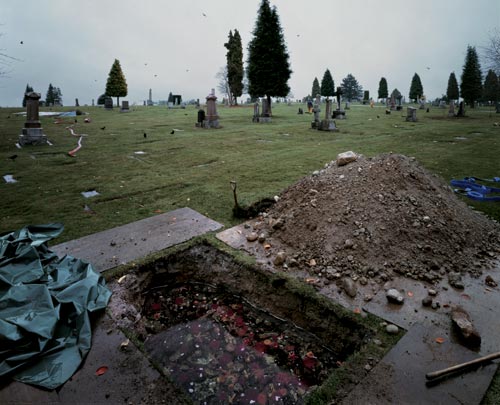
Jeff Wall,
The Flooded Grave, 1998ˆ2000. Silver dye bleach transparency in light box 89 15/16 x 111 in. (228.5 x 282 cm). The Art Institute of Chicago, promised gift of Pamela J. and Michael N. Alper; Claire and Gordon Prussian Fund for Contemporary Art; Harold L. Stuart Endowment; through prior acquisitions of the Mary and Leigh Block Collection © Jeff Wall
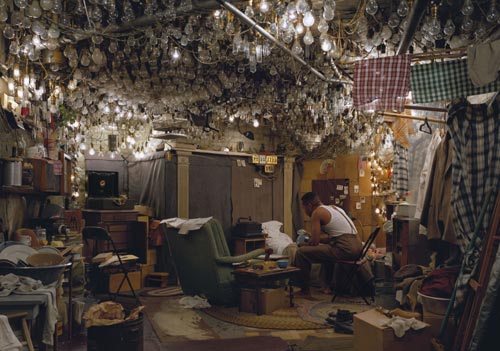
Jeff Wall,
After Invisible Man by Ralph Ellison, the Prologue, 1999ˆ2000. Silver dye bleach transparency in light box 68 1/2 x 98 3/4 in. (174 x 250.8 cm). Photography Council Fund, Horace W. Goldsmith Fund through Robert B. Menschel, and acquired through the generosity of Jo Carole and Ronald S. Lauder and Carol and David Appel © Jeff Wall
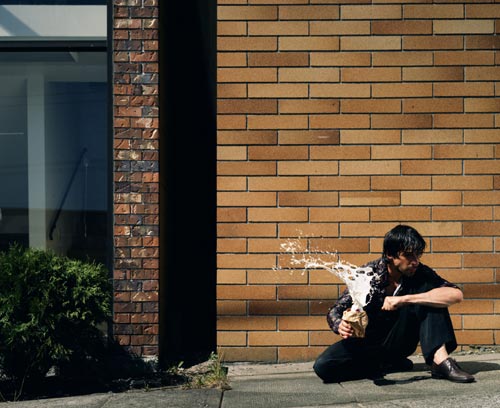
Jeff Wall,
Milk, 1984. Silver dye bleach transparency in light box 74 1/2 x 90 1/4 in. (189.2 x 229.2 cm). The Museum of Modern Art, New York. Acquired through the Mary Joy Thomson Legacy © Jeff Wall
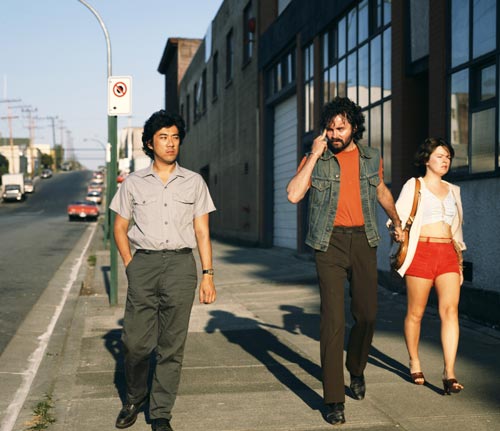
Jeff Wall,
Mimic, 1982. Silver dye bleach transparency in light box 77 15/16 x 89 15/16 in. (198 x 228.5 cm). Ydessa Hendeles Art Foundation, Toronto © Jeff Wall
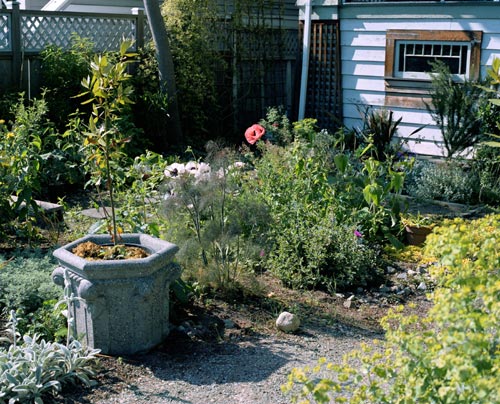
Jeff Wall,
Poppies in a garden, 2005. Silver dye bleach transparency in light box 37 3/8 x 46 7/16 in. (95 x 118 cm). Collection of the artist © Jeff Wall
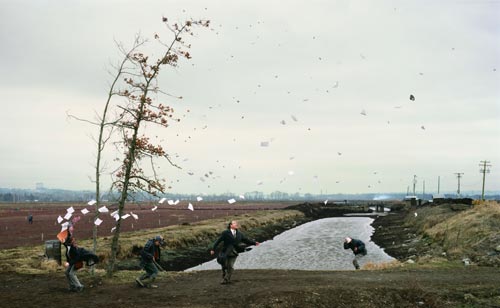
Jeff Wall,
A Sudden Gust of Wind (after Hokusai), 1993. Silver dye bleach transparency in light box 90 3/16 x 148 7/16 in. (229 x 377 cm). Tate, London. Purchased with the assistance from the Patrons of New Art through the Tate Gallery Foundation and from the National Art Collections Fund © Jeff Wall
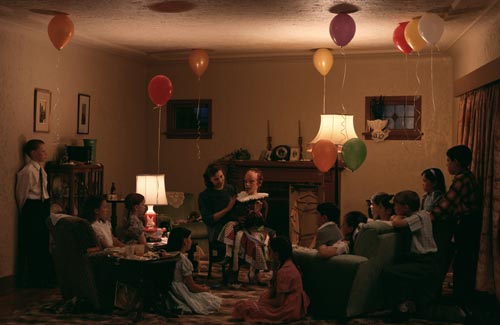
Jeff Wall,
A ventriloquist at a birthday party in October 1947, 1990. Silver dye bleach transparency in light box 90 3/16 x 138 3/4 in. (229 x 352.5 cm). Emanuel Hoffmann-Stiftung, on permanent loan to the Oeffentliche Kunstsammlung Basel © Jeff Wall
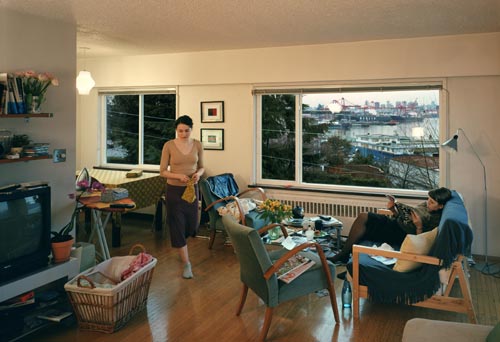
Jeff Wall,
A view from an apartment, 2004ˆ2005. Silver dye bleach transparency in light box 65 3/4 x 96 1/16 in. (167 x 244 cm). Tate, London. Purchased with assistance from the American Fund for the Tate Gallery and Tate Members 2006, London © Jeff Wall










